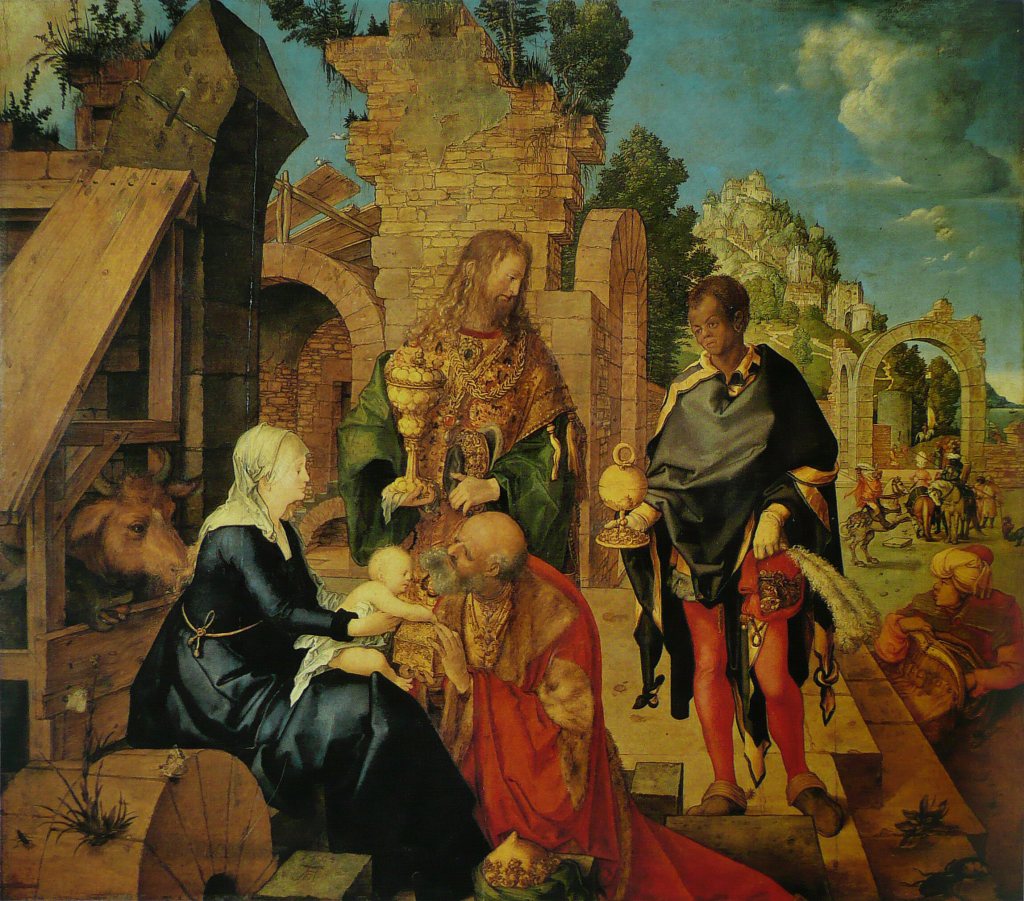This masterpiece by Albrecht Dürer – The Adoration of the Magi – from 1504 illustrates the development of the Germanic Black Magus, which first spread through Europe in the 1300s and became universally adopted by the 1400s. There were broad forces at work promoting the iconographic evolution of the Black Magus. One of the first royal families to advance more generally the positive representation of blacks in European art was the Hohenstaufen dynasty. Their remarkable fascination with black people, counting many blacks and Muslims as members of their own courts, meant that positive incarnations of black figures, saints, and martyrs in art became increasingly legitimized from the thirteenth century onwards.
Dürer’s Adoration builds on this tradition by celebrating the black figure. The artist inserted his own profile into the painting in the Magus standing at the center, but his gaze directs us to the vanishing point in the middle of the Black Magus’s chest. The lavishly dressed black figure stands alone, the entire right third of the painting his own; he becomes a bearing column. This work offers a fascinating window onto the diffusion of the Black Magus. The admiring depiction highlights the artist’s curiosity and open mind towards blacks.
Julia Alcamo
deutsch
Source: Albrecht Dürer, Adoration of the Magi (1504), Galleria degli Uffizi, Florence.

Albrecht Dürer, Adoration of the Magi (1504) by Julia Alcamo is licensed under a Creative Commons Attribution-ShareAlike 4.0 International License. Permissions beyond the scope of this license may be available at https://blackcentraleurope.com/who-we-are/.
